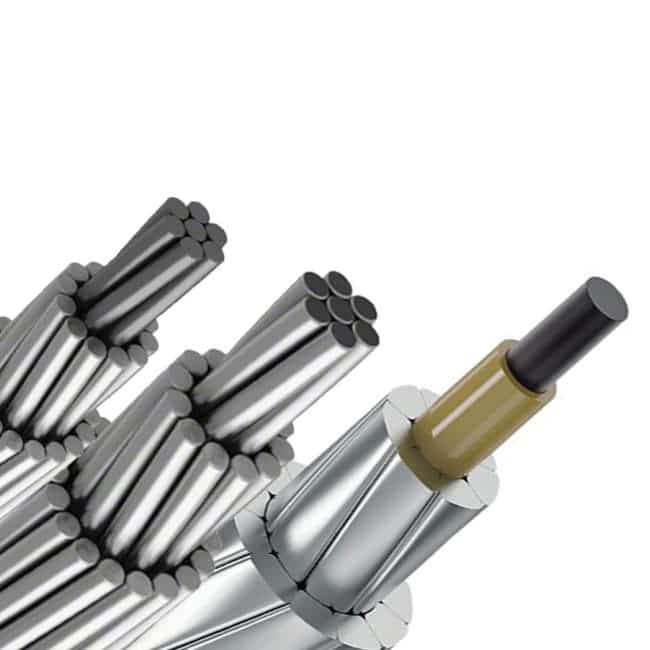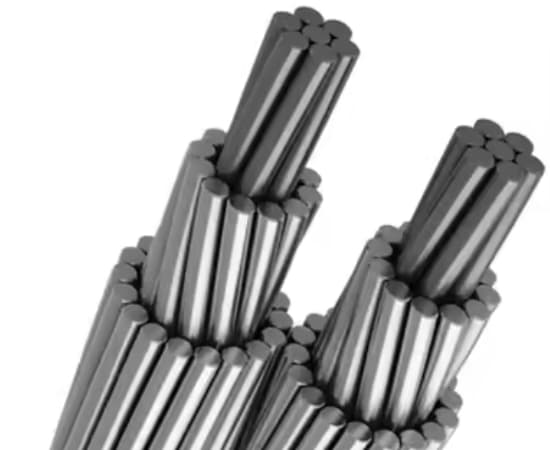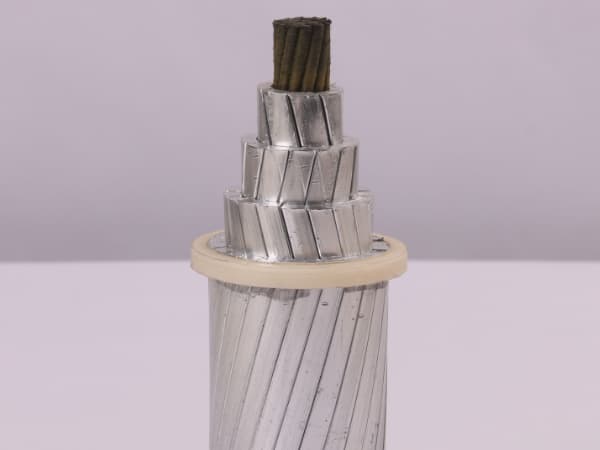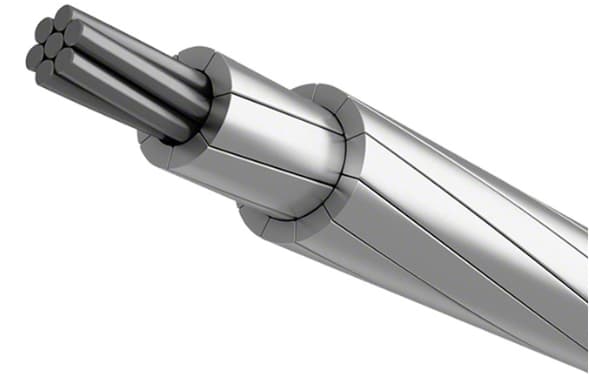
Dalam bidang penghantaran dan pengagihan kuasa elektrik, konduktor memainkan peranan penting dalam memastikan pemindahan kuasa yang cekap dan boleh dipercayai. Antara pelbagai jenis konduktor yang ada, konduktor terikan rendah suhu tinggi (Konduktor HTLS) dan pengalir bertetulang keluli aluminium (Konduktor ACSR) adalah dua pilihan yang paling menonjol. Setiap jenis mempunyai ciri tersendiri, kelebihan dan aplikasi, Oleh itu, penting untuk memahami perbezaan di antara mereka. Artikel ini menyelidiki perbandingan komprehensif konduktor HTLS dan konduktor ACSR, Meneroka bahan mereka, reka bentuk, prestasi, aplikasi dan pertimbangan ekonomi.
Pengenalan
Konduktor elektrik adalah tulang belakang sistem penghantaran kuasa, Mengangkut elektrik dari sumber generasi kepada pengguna. Memandangkan permintaan untuk elektrik tumbuh, Keperluan untuk talian penghantaran kapasiti yang lebih cekap dan lebih tinggi menjadi semakin penting. Konduktor HTLS dan ACSR adalah dua teknologi yang telah berkembang untuk memenuhi cabaran ini, Menawarkan penyelesaian yang berbeza untuk senario yang berbeza.
Bahan dan reka bentuk
Konduktor HTLS
Konduktor HTLS direka khusus untuk menahan suhu yang lebih tinggi sambil mengekalkan kendur yang rendah di bawah ketegangan. Prestasi unik ini dicapai melalui penggunaan bahan canggih dan reka bentuk inovatif. Inti konduktor HTLS biasanya terdiri daripada kekuatan tinggi, Bahan tahan haba seperti serat karbon atau aloi logam khas. Bahan teras ini mempunyai kekuatan mekanikal yang diperlukan untuk menyokong konduktor di bawah ketegangan sementara juga menentang pengembangan haba.
Lapisan luar konduktor HTLS terdiri daripada aloi aluminium khas yang telah direka khusus untuk mengekalkan kekonduksian dan kekuatan elektrik walaupun pada suhu tinggi. Aloi ini sering disebut sebagai “Aluminium suhu tinggi” atau “Aluminium tahan haba”. Gabungan bahan -bahan ini membolehkan konduktor beroperasi dengan selamat pada suhu yang jauh melebihi konduktor konvensional tanpa meningkatkan ketegangan atau ketegangan dalam struktur sokongan.
Konduktor ACSR
Konduktor ACSR telah menjadi landasan utama industri penghantaran selama beberapa dekad. Mereka agak sederhana dalam reka bentuk, terdiri daripada teras keluli pusat dan satu atau lebih lapisan konduktor aluminium. Teras keluli menyediakan kekuatan mekanikal yang diperlukan untuk menyokong konduktor, sementara aluminium menjalankan elektrik.
Aluminium yang digunakan dalam konduktor ACSR adalah ringan dan sangat konduktif, menjadikannya sesuai untuk penghantaran kuasa. Sebaliknya, teras keluli kuat dan tahan kakisan, memastikan integriti jangka panjang konduktor.

Ciri -ciri prestasi
Rintangan suhu
Perbezaan yang paling ketara antara konduktor HTLS dan ACSR adalah rintangan suhu mereka; Konduktor HTLS boleh beroperasi pada suhu yang lebih tinggi daripada konduktor ACSR tanpa kendur atau ketegangan yang berlebihan. Keupayaan ini kritikal di kawasan yang mempunyai suhu ambien yang tinggi atau di mana kapasiti garis sedia ada perlu ditingkatkan tanpa menaik taraf infrastruktur sokongan.
SAG dan ketegangan
Istilah “Kes yang rendah” Dalam konduktor HTLS merujuk kepada keupayaan konduktor untuk mengekalkan kendur yang agak berterusan pada suhu yang berbeza. Apabila suhu meningkat, konduktor konvensional cenderung berkembang dan kendur, yang meningkatkan ketegangan pada struktur sokongan. Ini boleh menyebabkan kegagalan struktur atau keperluan peningkatan yang mahal. Konduktor HTLS, Sebaliknya, dapat menahan suhu yang lebih tinggi tanpa perubahan kendur atau ketegangan yang ketara kerana bahan dan reka bentuk canggih mereka.
Konduktor HTLS direka khusus untuk beroperasi pada suhu yang lebih tinggi tanpa kendur yang ketara, membolehkan peningkatan kapasiti penghantaran dan kecekapan sistem yang lebih baik. Istilah “Kes yang rendah” merujuk kepada keupayaan konduktor untuk mengekalkan bentuk dan kedudukan yang agak stabil di bawah pengembangan terma, yang sangat penting dalam talian penghantaran jangka panjang di mana SAG boleh memberi kesan kepada pelepasan dan keselamatan garis yang ketara.
Sebaliknya, Konduktor ACSR mempunyai tindak balas sag dan ketegangan yang lebih ketara terhadap perubahan suhu. Walaupun konduktor ini masih mampu menghantar kuasa dengan cekap dalam julat reka bentuk mereka, Struktur sokongan tambahan atau peningkatan mungkin diperlukan untuk mengatasi peningkatan beban atau suhu.
Sifat elektrik dan mekanikal
Kedua -dua konduktor HTL dan ACSR mempunyai sifat elektrik dan mekanikal yang sangat baik. Konduktor HTLS mengekalkan kekonduksian dan kekuatan elektrik walaupun pada suhu tinggi, memastikan penghantaran kuasa yang boleh dipercayai. Konduktor ACSR tidak tahan terhadap suhu tinggi tetapi masih mempunyai kekonduksian elektrik yang tinggi dan kekuatan mekanikal, menjadikan mereka pilihan yang boleh dipercayai untuk pelbagai aplikasi.

Aplikasi
Pemilihan konduktor HTL dan ACSR bergantung terutamanya kepada keperluan khusus sistem penghantaran.
Aplikasi untuk konduktor HTLS
Konduktor HTLS sangat sesuai untuk aplikasi di mana suhu tinggi atau peningkatan kapasiti penghantaran diperlukan. Contohnya, di kawasan tropika atau padang pasir di mana suhu ambien secara konsisten tinggi, Konduktor HTLS dapat mengekalkan kapasiti penghantaran yang stabil tanpa memerlukan pelarasan SAG atau ketegangan yang berlebihan.
Konduktor HTLS juga boleh digunakan untuk menaik taraf talian penghantaran sedia ada untuk meningkatkan kapasiti penghantaran tanpa memerlukan menara baru atau pencerobohan kanan. Dengan menggantikan konduktor sedia ada dengan konduktor HTLS, Utiliti dapat meningkatkan kapasiti penghantaran garisan mereka sambil meminimumkan kesan alam sekitar dan komuniti.
Aplikasi Wire ACSR
Konduktor ACSR adalah pilihan pertama untuk pelbagai aplikasi penghantaran dan pengedaran. Keberkesanan dan keberkesanan kos mereka menjadikannya sesuai untuk segala -galanya dari garis pengedaran kecil ke grid penghantaran yang besar.
Perbezaan utama antara konduktor HTLS dan konduktor ACSR adalah reka bentuk mereka, komposisi bahan, penilaian suhu, Ciri -ciri SAG, dan prestasi di bawah beban elektrik yang berat. HTLS konduktor menawarkan manfaat toleransi suhu yang lebih tinggi, Sag bawah, Keupayaan pemindahan kuasa yang lebih tinggi, dan berat badan yang lebih ringan, Walaupun konduktor ACSR terkenal dengan kekuatan mekanikal mereka, kebolehpercayaan, dan keberkesanan kos. Pemilihan konduktor HTLS dan ACSR bergantung kepada keperluan projek tertentu, termasuk keadaan alam sekitar, keperluan pemindahan kuasa, dan pertimbangan belanjawan. Pilihan antara konduktor HTLS dan ACSR bergantung kepada keperluan projek tertentu, termasuk keadaan alam sekitar, keperluan penghantaran kuasa, dan pertimbangan belanjawan.

